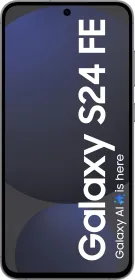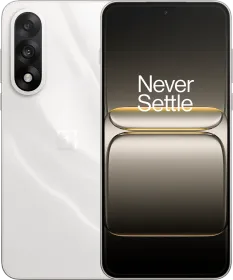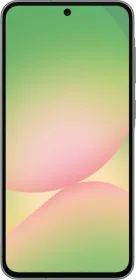Apple and Samsung love making “budget flagships,” but let’s be real—these aren’t exactly affordable for the Indian market. The iPhone 16e is Apple’s latest attempt at making an “affordable” iPhone, while the Galaxy S24 FE packs flagship specs at a slightly lower price. Both claim to bring premium features without breaking the bank, but do they actually deliver? Let’s dive in and see which one makes more sense for you.
iPhone 16e vs. Samsung Galaxy S24 FE: Design and Build
Apple sticks to its usual formula—glass back, aluminum frame, and that same notch design we’ve seen for years. It’s more compact (6.1-inch) and lightweight at 167g, which is great for one-handed use, but there’s no MagSafe or Qi2 wireless charging, which feels like a step backward.
The S24 FE, on the other hand, is bigger, heavier (213g), and comes with Gorilla Glass Victus+ on both sides. It’s bulkier, but that’s the trade-off for a larger display and a bigger battery.

Both phones are IP68-rated, but Apple takes the lead with 6m water resistance compared to Samsung’s 1.5m. If you want something compact, the 16e is your pick. If you prefer a sturdy build and don’t mind the extra weight, the S24 FE has the edge.
iPhone 16e vs. Samsung Galaxy S24 FE: Display
The iPhone 16e sticks with Apple’s Super Retina XDR OLED, but it’s still limited to 60 Hz—unforgivable in 2025. The 6.1-inch panel is sharp, thanks to it being a Retina display. The peak brightness is 1200 Nits while the maximum global brightness is 800 Nits, a little low as per 2025 standards.
Meanwhile, the Galaxy S24 FE flexes a 6.7-inch Dynamic AMOLED 2X with a 120 Hz refresh rate, HDR10+, and a peak brightness of 1900 Nits. It’s smoother, brighter, and simply better for gaming and scrolling.
The iPhone’s Ceramic Shield offers solid durability, but Samsung fights back with Gorilla Glass Victus+. If display fluidity and brightness matter to you, the S24 FE is the obvious pick.
ALSO READ: How to Create & Use Instagram Teen Account in India
iPhone 16e vs. Samsung Galaxy S24 FE: Performance
The iPhone 16e runs on Apple’s A18 chip, but with just four GPU cores instead of the 16’s five, meaning slightly weaker graphics. Still, Apple’s optimization should keep it snappy. That said, there’s no cooling system inside the iPhone 16e, making it less ideal for sustained loads.
The S24 FE packs Samsung’s Exynos 2400e, a 10-core chipset that’s powerful but not on A18’s level, especially in efficiency. The S24 FE is equipped with vapor chamber cooling, which, in theory, should help it sustain performance.

When it comes to gaming, the iPhone wins on raw power, but the S24 FE’s 120 Hz display and better sustained performance might make it the smarter choice for longer sessions. Although it really depends on what kind of games you play or care about.
ALSO READ: Another iPhone Parts Maker Considers India Expansion
iPhone 16e vs. Samsung Galaxy S24 FE: Software
The iPhone 16e runs iOS 18.3, bringing Apple’s usual smooth experience, tight ecosystem, and long-term updates. Since it’s a 60 Hz display, there’s no support for an always-on display. Apple usually supports its devices for 5 years.

The Galaxy S24 FE runs One UI 6.1 on Android 14, with Samsung promising 7 years of updates. You get tons of features—DeX, Circle to Search, full theming, and more flexibility. If you love Apple’s ecosystem, iOS is solid, but if you want freedom and functionality, One UI takes the win.
Samsung’s Galaxy AI is already available, with real-world features like Live Translate, Note Summarization, and Circle to Search, all running on-device or via the cloud. It’s useful today.

Meanwhile, Apple Intelligence is still in the pipeline—Siri’s long-overdue context awareness and AI-generated summaries are rolled back, and most AI features won’t even launch with iOS 18.3. In fact, the only feature Apple advertised was the Cleanup feature.

So, if you want AI that actually works now, Galaxy AI is ahead.
ALSO READ: xAI Announces Grok 3 AI Model Trained With 200 Million GPU-Hours: Check Details Here
iPhone 16e vs. Samsung Galaxy S24 FE: Cameras
Apple’s “Fusion Camera” marketing aside, the iPhone 16e’s camera setup is basically the same 48 MP sensor from the iPhone 15, with a tiny 1/2.55-inch sensor size. Apple claims its 2X crop acts like a telephoto, but it’s just digital zoom.

Meanwhile, the Galaxy S24 FE packs a 50 MP main sensor, a dedicated 3X telephoto (though not the best), and a 12 MP ultra-wide. The S24 FE offers more versatility, while Apple leans on its processing to compensate.

For selfies, the iPhone 16e sticks with a 12 MP front camera with autofocus, while the S24 FE has a 10 MP sensor. Both support 4K recording, but Apple includes Dolby Vision HDR.
Samsung’s processing tends to be punchier, while Apple’s is more natural. Ultimately, the iPhone relies on computational tricks, but the S24 FE gives you actual hardware for zoom and better framing.
iPhone 16e vs. Samsung Galaxy S24 FE: Battery and Charging
The iPhone 16e sticks with Apple’s usual slow charging—20W USB-C wired, 7.5W wireless (no MagSafe or Qi2). Battery capacity isn’t listed, but expect something around 3,300 mAh. Apple claims 26 hours video playback though.

In contrast, the Galaxy S24 FE has a larger 4,700 mAh battery with 25W wired and 15W wireless charging, plus reverse wireless. Apple’s efficiency might help, but Samsung easily wins in raw battery life and charging speed.
iPhone 16e vs. Samsung Galaxy S24 FE: Verdict
The iPhone 16e costs ₹59,900 for 8/128GB, while the Galaxy S24 FE, originally launched at ₹59,999, is now available for around ₹42,000. The 16e brings Apple’s ecosystem, Fusion camera claims, and A18 chip, but it lacks a high refresh rate, fast charging, and proper cooling.
The S24 FE offers a bigger, smoother display, better AI features (for now), faster charging, and more versatile cameras. At its current price, the S24 FE looks like the better deal unless you’re locked into iOS. If you’re locked into Apple’s ecosystem, the 16e might make sense, but for pure value, the S24 FE is the better pick.
You can follow Smartprix on Twitter, Facebook, Instagram, and Google News. Visit smartprix.com for the latest tech and auto news, reviews, and guides.



































